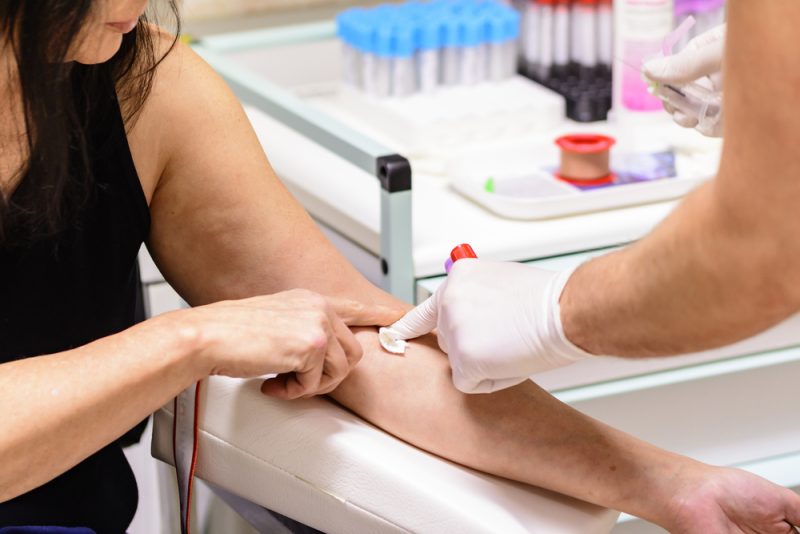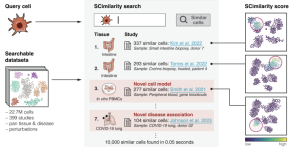Blood test predicts 30-year cardiovascular disease risks for women

At a Glance
- Researchers found that a blood test to measure levels of three compounds could predict a woman’s risk for cardiovascular disease decades later.
- The findings may lead to ways to detect and treat cardiovascular disease earlier.
Cardiovascular disease is the term for diseases that affect the heart or blood vessels. These include coronary heart disease, heart attacks, stroke, heart failure, and peripheral artery disease. More than 800,000 people nationwide die of such diseases every year.
People can take actions to improve their cardiovascular health, including getting regular physical activity, eating a heart-healthy diet, managing stress, and avoiding tobacco or quitting smoking. Higher cholesterol and inflammation levels have both been tied to cardiovascular disease, and medications to lower these can also help. Researchers have found that any steps people take earlier in life to support their heart and vascular health can add up over time to bring better health outcomes years later.
A research team led by Dr. Paul M. Ridker at Brigham and Women’s Hospital set out to study whether blood measures of cholesterol and inflammation could predict cardiovascular disease decades later. If so, blood tests could help guide preventive treatments. The team collected blood samples and medical information from nearly 28,000 health care providers nationwide who participated in the Women’s Health Study. Women who started the study between 1992-1995 at an average age of 55 were followed for up to 30 years.
The researchers assessed high-sensitivity C-reactive protein (CRP), a marker of inflammation, along with low-density lipoprotein (LDL) cholesterol and lipoprotein(a), or Lp(a), a lipid partly made of LDL. Results appeared on August 31, 2024, in the New England Journal of Medicine.
During the study, 3,662 participants experienced a heart attack, stroke, surgery to restore circulation, or a cardiovascular-related death. Participants were grouped into five categories, ranging from those with the highest to lowest levels of each of the three markers.
The team found that women with the highest levels of LDL cholesterol had a 36% greater risk for heart disease compared to those with the lowest levels. Those with the highest levels of Lp(a) had a 33% greater risk. Those with the highest levels of CRP had a 70% greater risk.
When all three measures were assessed together, women with the highest levels had more than 1.5 times the risk for stroke and more than triple the risk for coronary heart disease compared to women with the lowest levels. Although only women were assessed in this study, similar results would be expected in men.
“We can’t treat what we don’t measure, and we hope these findings move the field closer to identifying even earlier ways to detect and prevent heart disease,” Ridker says.
LDL cholesterol is routinely measured by healthcare providers. High levels can be treated with widely available therapies, such as statins. Lp(a) and CRP screening recommendations can vary. Therapies are available for those with elevated levels, and researchers are testing new approaches to personalize and improve treatment options.
Funding: NIH’s National Heart, Lung, and Blood Institute and grants (NHLBI) and National Cancer Institute (NCI).






